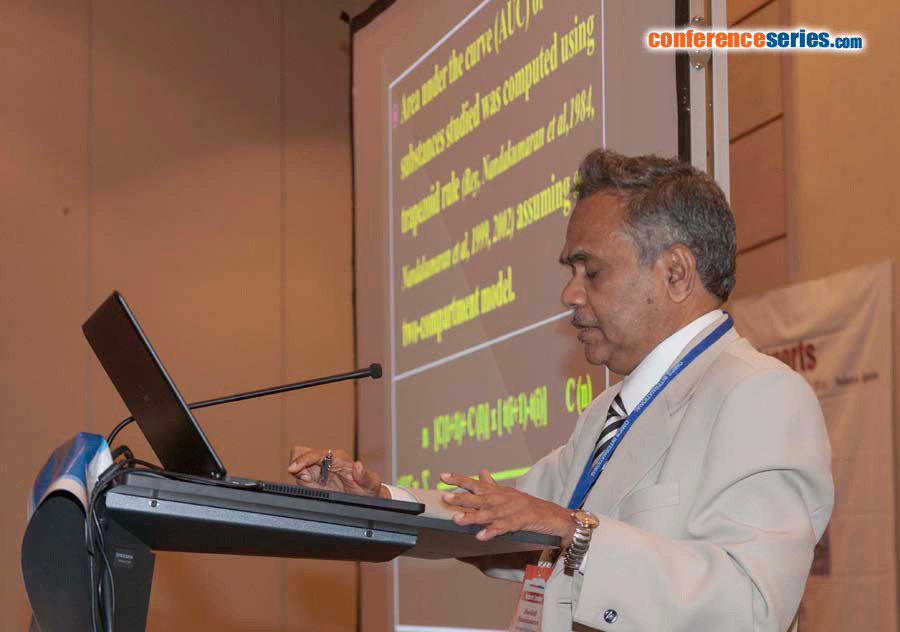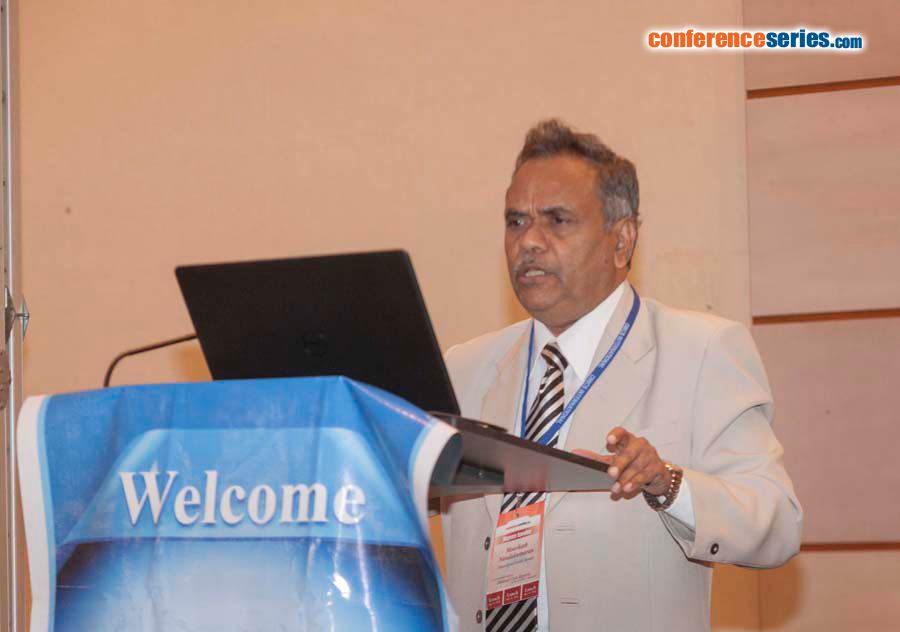
Moorkath Nandakumaran
University of Kuwait, Kuwait
Title: Maternal-fetal transport of L-leucine in pre-eclamptic pregnancies in vitro
Biography
Biography: Moorkath Nandakumaran
Abstract
Introduction: Previous reports from our laboratory had shown that maternal-fetal transport kinetics of model nutrients and reference markers were altered in toxemia model placenta in vitro. Th is study was meant to explore whether transport kinetics of a model amino acid L-Leucine were altered in placenta from pre-eclamptic pregnancies in vitro. Methods: Human placenta from pre-eclamptic pregnancies were collected post-partum.14-C labeled L-leucine (specifi c activity: 54 uCi/mmol, Amersham, UK) along with tritiated water (specifi c activity 5 mCi/mmol, Amersham, UK) as reference marker were then injected as a single bolus (100 ul) into the maternal arterial circulation of perfused placental lobules and perfusate samples collected from maternal and fetal circulations over a period of 5 minutes. National Culture and Tissue Collection medium, diluted with Earle's buff ered salt solution was used as the perfusate. Concentration of labeled substances in perfusate samples in control and toxemia model perfusion phases was assessed by scintillation spectrometry (LKB Wallac Scintillation Spectrometer, Denmark) using preadjusted double window counting. Transport kinetics of substances studied was computed using established permeation parameters. Results: Diff erential transport rates of L-leucine and tritiated water in 8 perfusions diff ered signifi cantly (Student's t-test; p<0.05) for all transport fractions studied in control perfusions and perfusions from three pre-eclamptic pregnancies. Transport Fraction index of L-leucine compared to reference marker averaged 35.2% in control perfusions (n=8) and 22.20% in perfusions from pre-eclamptic pregnancies (n=3) respectively. Th e diff erence observed in TF index of L-leucine in control and study groups was statistically signifi cant (Student's t-test, p<0.05) Indices of transport fraction and certain pharmacokinetic parameters such as area under the curve, absorption rate, elimination rate of deoxy glucose compared to reference marker were signifi cantly diff erent (p<0.05) between control and pre-eclampsia groups. Absorption rate: Elimination rate indices of model amino acid diff ered signifi cantly between control and study groups (Student's t-test; p<0.05). Conclusions: Our studies show for the fi rst time that transport behavior of a model amino acid leucine is compromised in preeclamptic pregnancies and that the altered behavior of placental membrane in amino acid transport in such pregnancies has the potential to cause undesirable sequelae for the fetus and neonate.




